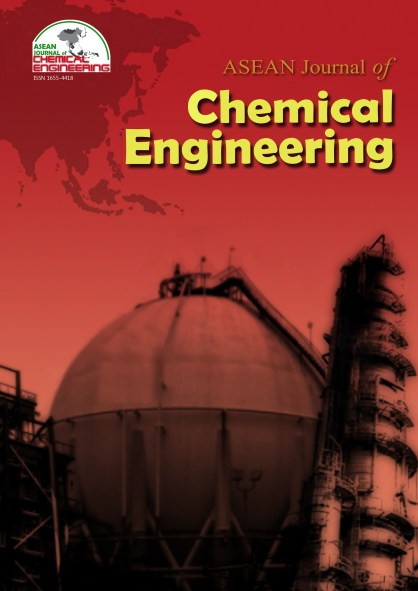An Overview of Difficulties in Controlling Intensified Process
Abstract
Process intensification (PI) is currently one of the most significant trends in chemical engineering and process technology. PI is a strategy of making dramatic reductions in the size of unit operations within chemical plants, in order to achieve production objectives. PI technology is able to change dramatically the whole chemical engineering industry pathway to a faster, cleaner and safer industry. Nonetheless, PI technology will be handicapped if such system is not properly controlled. There are some foreseeable problems in order to control such processes for instance, dynamic interaction between components that make up a control loop, response time of the instrumentations, availability of proper sensor and etc. This paper offers an overview and discussion on identifying potential problems of controlling intensified systems.References
2. Adrian, T., Schoenmakers, H. and Boll, M. (2004). “Model predictive control of integrated unit operations: Control of a divided wall column,” Chemical Engineering and Processing, 43(3), 347–355.
3. Al-Arfaj, M.A., Luyben, W.L. (2000). “Comparison of alternative control structures for an ideal two-product reactive distillation column.” Industrial and Engineering Chemistry Research, 39(9), 3298–3307.
4. Al-Arfaj, M.A., Luyben, W.L. (2002a). “Control of ethylene glycol reactive distillation column,” A.I.Ch.E. Journal, 48(4), 905–908.
5. Al-Arfaj, M. A., Luyben, W. L. (2002b). “Design and control of an olefin metathesis reactive distillation column.” Chemical Engineering Science, 57(5), 715–733.
6. Bisowarno, B. H., Tian, Y. C., Tade, M. O. (2003). “Model gain scheduling control of an ethyl tert-butyl ether reactive distillation column.” Industrial and Engineering Chemistry Research, 42(15), 3584–3591.
7. Curry, J. E., Jackson, S. M., Stohrer, B. and van der Veen A. P. (1988). “Free radical degradation of polypropylene,” Chemical Engineering Progress, 84(11), 43-46.
8. Keller, G. E. and Bryan, P. F. (2000). “Process engineering: Moving in new directions.” Chemical Engineering Process, 96(1), 41- 49.
9. McGreavy, C. (1983). “On-line control system for chemical reaction processes. “Computers and Chemical Engieering, 7(4), 529-566.
10. Olanrewaju, M. J.,and Al-Arfaj M. A. (2006). “Estimator-based control of reactive distillation system: Application of an extended Kalman filtering.” Chemical Engineering Science, 61(10), 3386-3399.
11. Pabedinskas, A., Cluett, W. R., and Balke, S. T. (1989). “Process control for polypropylene degradation during reactive extrusion.” Polymer Engineering and Science, 29(15), 993-1003.
12. Pabedinskas, A., and Cluett, W. R. (1994). “Controller design and performance analysis for a reactive extrusion process” Polymer Engineering and Science, 34(7), 585-597.
13. Palusinski, A. O., Vrudhula, S., Znamirowski, L., Humbert, D. (2001).” Process control for microreactors.” Measurement and Control 60-66.
14. Rogge, T., Rummler, Z., Schomburg, W. K. (2004). “Polymer micro valve with a hydraulic piezo-drive fabricated by the AMANDA process,” Sensors and Actuators A 110, 206–212.
15. Stankiewicz, A. (2004). Re-engineering the chemical process plant. Marcel Dekker, Inc., New York. Basel
16. Toledo, E. C. V., Martini, R. F., Maciel, M. R. W., Filho, R. M. (2005). “Process intensification for high operational performance target: Autorefrigerated CSTR polymerization reactor.” Computers and Chemical Engineering, 29(6), 1447–1455.
17. Wille, Ch., Gabski, H. P., Haller, Th., Kim, H., Unverdorben, L., and Winter, R. (2004) ”Synthesis of pigments in a three-stage microreactor pilot plant—An experimental technical report,” Chemical Engineering Journal, 101, 179–185.
Copyright holder for articles is ASEAN Journal of Chemical Engineering. Articles published in ASEAN J. Chem. Eng. are distributed under a Creative Commons Attribution-NonCommercial 4.0 International (CC BY-NC 4.0) license.
Authors agree to transfer all copyright rights in and to the above work to the ASEAN Journal of Chemical Engineering Editorial Board so that the Editorial Board shall have the right to publish the work for non-profit use in any media or form. In return, authors retain: (1) all proprietary rights other than copyright; (2) re-use of all or part of the above paper in their other work; (3) right to reproduce or authorize others to reproduce the above paper for authors’ personal use or for company use if the source and the journal copyright notice is indicated, and if the reproduction is not made for the purpose of sale.



